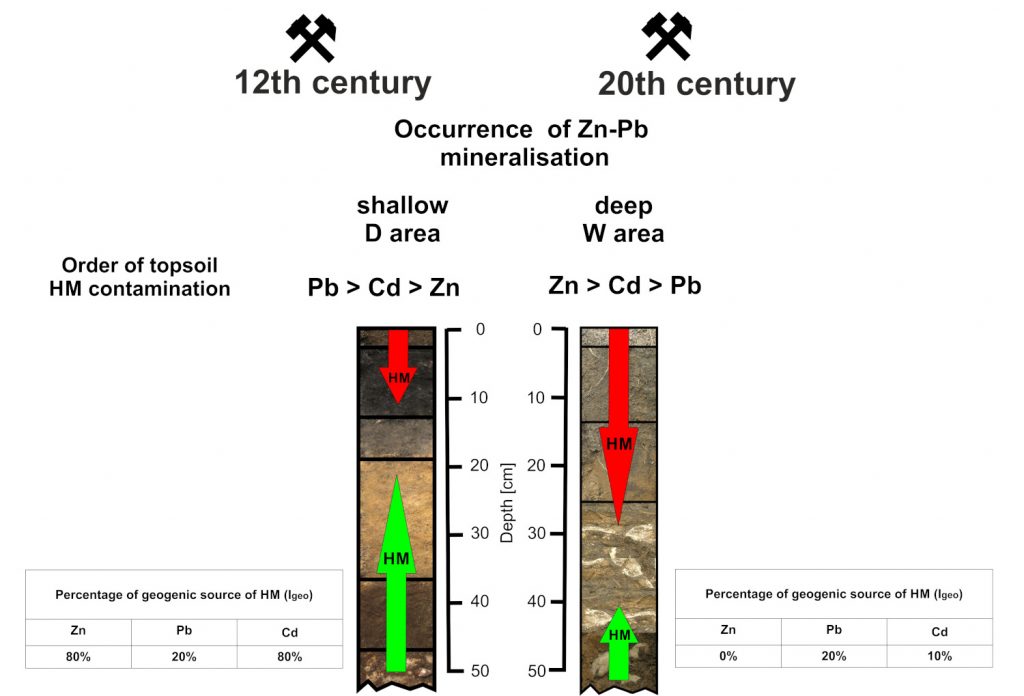Researchers of the Institute of Earth Sciences of the University of Silesia and the Department of Agricultural and Environmental Chemistry at the University of Agriculture in Krakow have published in the journal Minerals the results of studies on the assessment of soil quality in the area of Zn-Pb mineralisation in southern Poland. The topsoil layers (up to 30 cm depth) from two areas differing in the depth of the occurrence of ore-bearing dolomites and the method of the deposits exploitation were studied. The heavy metal (HM) contamination in the soil samples was evaluated by applying: pollution factor (Cf), degree of contamination (Cdeg), pollution load index (PLI) and geoaccumulation index (Igeo). There was established that, the HM content exceeded local geochemical background levels by 2.5–18.1 times. Very high to moderate topsoil contamination was determined. In a shallow historical mining zone, the relative influence of particular HM was found to be in the order of Pb > Cd > Zn and, in a deep mining zone, Zn > Cd > Pb. In the topsoil developed over shallow ore bodies, the HM content was mainly (60%) due to naturally occurring HM. In the area of deeply buried ore bodies, 90% of the HM load was related to anthropogenic sources (Fig.1). Zn, Pb and Cd vertical distributions and the patterns of topsoil pollution differ in terms of types of mined ores, mining methods and times elapsed since mining ceased.
Sutkowska K., Teper L., Czech T., Hulok T., Olszak M. and Zogala J. 2020.Quality of Peri-Urban Soil Developed from Ore-Bearing Carbonates: Heavy Metal Levels and Source Apportionment Assessed Using Pollution Indices. Minerals 10, 1140; doi:10.3390/min10121140






